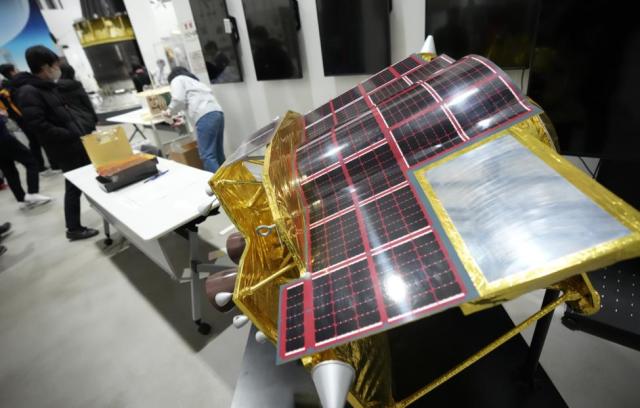The connection with him has been established, JAXA said
TOKYO, January 19th. /tass/. Communication with the first Japanese lunar module SLIM has been established after its landing on the moon, but it is experiencing power problems due to the fact that solar panels do not generate energy. This was reported by the Japan Aerospace Exploration Agency (JAXA).
"The Japan Aerospace Exploration Agency confirmed that the SLIM module landed on the Moon at 00:20 on January 20, 2024, Japanese time [at 18:20 Moscow time on January 19]. After landing, communication with him was established. However, solar cells do not generate electricity, so we are currently prioritizing data collection on the surface of the moon," the press release says. The lunar landing site is presumably located in the area of the small crater Siori on the visible side of the Earth's satellite.
The mission was successful
JAXA representative Hitoshi Kuninaka considers the mission to land the first Japanese lunar module to be generally successful.
"We believe that the landing was generally successful. The main reason for this is that the device was able to send telemetry to Earth. This, in turn, means that the main part of the module's equipment is functioning," he said. According to him, the module sends signals to Earth. At the same time, JAXA reported problems with the power generation of the solar cells of the device. Now it is powered by the built-in battery.
The landing site is presumably located in the area of the small crater Siori on the visible side of the Moon. According to Kuninaki, it will take about a month for JAXA to determine how accurate the landing was. He expressed the hope that the angle of incidence of sunlight on the Moon will change and the module will be able to obtain the necessary energy using on-board solar panels.
Japan has become the fifth country in the world to land its module on a natural satellite of the Earth. Previously, the Soviet Union, the United States, China and India had succeeded.
The SLIM device, 2.4 m high and weighing 200 kg, is designed to study craters and the relief of the Moon using technologies similar to those used in facial recognition systems. SLIM is equipped with a special camera that allows you to measure the content of iron and other elements in rocks on the lunar surface. The module has technologies that allow you to land in a certain place with an error of no more than 100 m. The data obtained by the device is supposed to be used, in particular, within the framework of the lunar program of the US National Aeronautics and Space Administration (NASA) Artemis.
The Japanese module is also equipped with two small robots. After the moon landing, it was planned that each of them would use their own wide-angle camera to take pictures. The first of them, LEV-1, 30 cm high, uses springs for movement. It also plays the role of a device for recording and transmitting data to Earth. The second robot has the shape of a ball with a diameter of about 8 cm and a weight of 250 g.
SLIM was launched on September 7 last year from the Tanegashima Cosmodrome in Kagoshima Prefecture. Initially, Japan planned to send the module to the Moon in May 2023, but the deadline was postponed due to the unsuccessful launch of a new H3 heavy-class launch vehicle. The spacecraft was launched into lunar orbit on December 25 of the same year.

